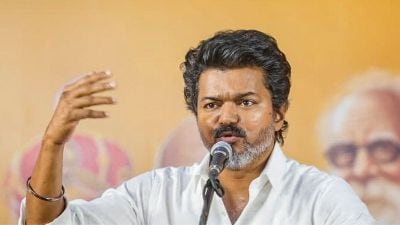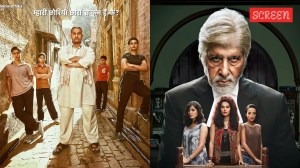For comrades in Laloo land, M is for Mandal and not Marx or Mao
Marxwadi Nagar is perhaps a strange name for a settlement. But it is surrounded by Stalin Nagar, Pramode Das Gupta Nagar and Muzafar Ahmad N...

Marxwadi Nagar is perhaps a strange name for a settlement. But it is surrounded by Stalin Nagar, Pramode Das Gupta Nagar and Muzafar Ahmad Nagar, the last two named after founding leaders of the Communist Party of India (CPI).
These settlements—built on 50 acres captured from a landlord, inspired by revolutionaries—have a story to tell. The story of the Bihar after Mandal which carries the secret of Laloo Prasad Yadav.
The landless-turned-Marxist warriors, inspired by the Communist leaders, built the settlement in mid-’80s. Two decades later, in the land of Buddha’s awakening, Marx has given way to Mandal.
People in these settlements along the road that connects Bodh Gaya to the GT road are now Mandalites—they consider caste-based politics as more liberating. Marx is abandoned, Buddha can wait though Dalit activists are pushing Buddhism.
‘‘Everyone here votes on caste lines, though we participate in some CPI programmes,’’ says Rakesh Kumar, a college student.
In the 1970s, Marxists in Gaya believed India’s Long March had begun there. ‘‘People were rebellious and the party’s struggle was genuine,’’ S B Bhaskar, Marxist veteran who is now bitter about all Marxist parties, says.
‘‘Today the CPM and CPI are endorsing RJD criminals; (Sitaram) Yechuri is travelling by helicopters where as in our days the general secretary travelled in 3rd class trains,’’ he fumes. Bhaskar has withdrawn from active politics to reading but those Marxists who wanted to stay on in politics had to adjust to caste politics after 1990s.
Some straight away joined Janata Dal, Rashtriya Janata Dal and Samata, and now both the CPI and CPM are in alliance with the RJD. Voters in P D Gupta Nagar are all of the same class, but different castes, and caste defines their voting behavior. ‘‘Bihar wants an educated CM; anyone but Rabri,’’ the youth who says this, is predictably Kurmi, the caste of Nitish Kumar, a contender for the CM’s post.
Bittal Yadav confronts him straight, leaving nothing to guess: ‘‘Yadavs will decide who will rule, we have a majority.’’ These youth are all college-going and politically aware, but not bothered about the candidates. ‘‘We go by symbols—the lantern or the lotus,’’ says Shankar Kumar.
The Bodh Gaya constituency has a Dalit MLA from the RJD, so the Dalits of Marxwadi Nagar will vote along with the Yadavs.
That the Indira Awaz Yojana houses built here are dilapidated is just one side of the story. The other side is that after Laloo came to power, they got the papers of the land they were occupying. ‘‘We are deprived in many aspects; but we are also better off than 15 years ago in many aspects,’’ says 46-year-old Pankaj Ravidas who was among the original fighters.
In Gaya alone, two heavyweights of the RJD are coverts from Marxism—law minister Shakeel Ahmad was CPI stalwart when he switched sides to be part of the Muslim-Yadav combination. Binod Kumar Yadavendu, RJD MLA in Gaya Muffasil, had his upbringing as an SFI leader. ‘‘With Mandal forces sweeping Bihar, traditional Marxism could not survive,’’ says P K Shandilya, a columnist in Gaya. ‘‘Even extreme Leftists move on caste lines now,’’ he says.
Though Mandal has pushed Marxism to demise in Bihar, veterans like Bhaskar feel there is more to it. ‘‘It is when the parties stopped mobilsing the classes that caste took over. Casteism merely filled a political vacuum,’’ he thinks.








- 01
- 02
- 03
- 04
- 05























